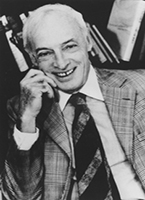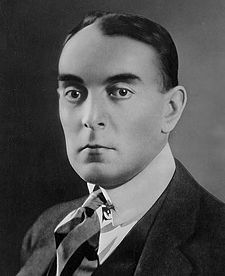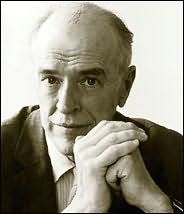
Jennifer Homans
Born: in Chicago, Illinois 1960
Connection to Illinois: Homans was raised in Chicago, where she trained as a ballerina from the age of eight. By the time she was a teenager, Homans had enrolled in dance classes at the University of Chicago. She performed with the Chicago Lyric Opera Ballet. Biography: Jennifer Homans is the dance critic for The New Yorker. Her widely acclaimed Apollo's Angels: A History of Ballet was a bestseller and named one of the ten best books of the year by The New York Times Book Review. Trained in dance at George Balanchine’s School of American Ballet, she performed professionally with the Chicago Lyric Opera Ballet and the Pacific Northwest Ballet. She earned her BA at Columbia University and her PhD in modern European history at New York University, where she is a Distinguished Scholar in Residence and the Founding Director of the Center for Ballet and the Arts.
Awards:
- Mr. B Finalist for the 2023 National Book Critics Circle award in Biography; New York Times Editors' Choice - Longlisted for the Biographers International Plutarch Award - ONE OF THE BEST BOOKS OF THE YEAR: The New York Times Book Review, The New Yorker, Vanity Fair, NPR, Oprah Daily; HONOREE, BERNARD J. BROMMEL AWARD FOR BIOGRAPHY & MEMOIR, Society of Midland Authors, 2023
- Apollo's Angels NEW YORK TIMES BESTSELLER; NAMED ONE OF THE BEST BOOKS OF THE YEAR BY THE NEW YORK TIMES BOOK REVIEW, LOS ANGELES TIMES, SAN FRANCISCO CHRONICLE, AND PUBLISHERS WEEKLY; One of The New York Times Book Review’s 10 Best Books of the Year; Starred Reviews - Booklist, Kirkus, and Publishers Weekly
Wikipedia: https://en.wikipedia.org/wiki/Jennifer_Homans
Selected Titles
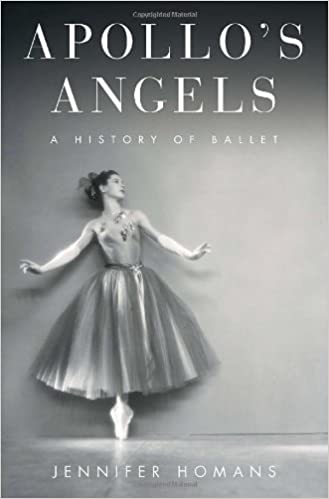 |
Apollo's Angels: A History of Ballet ISBN: 1400060605 OCLC: 515405940 Random House New York : 2010 For more than four hundred years, the art of ballet has stood at the center of Western civilization. Its traditions serve as a record of our past. A ballerina dancing The Sleeping Beauty today is a link in a long chain of dancers stretching back to sixteenth-century Italy and France: Her graceful movements recall a lost world of courts, kings, and aristocracy, but her steps and gestures are also marked by the dramatic changes in dance and culture that followed. Ballet has been shaped by the Renaissance and Classicism, the Enlightenment and Romanticism, Bolshevism, Modernism, and the Cold War. Apollo’s Angels is a groundbreaking work—the first cultural history of ballet ever written, lavishly illustrated and beautifully told.Ballet is unique: It has no written texts or standardized notation. It is a storytelling art passed on from teacher to student. The steps are never just the steps—they are a living, breathing document of a culture and a tradition. And while ballet’s language is shared by dancers everywhere, its artists have developed distinct national styles. French, Italian, Danish, Russian, English, and American traditions each have their own expression, often formed in response to political and societal upheavals.From ballet’s origins in the Renaissance and the codification of its basic steps and positions under France’s Louis XIV (himself an avid dancer), the art form wound its way through the courts of Europe, from Paris and Milan to Vienna and St. Petersburg. It was in Russia that dance developed into the form most familiar to American audiences: The Sleeping Beauty, Swan Lake, and The Nutcracker originated at the Imperial court. In the twentieth century, émigré dancers taught their art to a generation in the United States and in Western Europe, setting off a new and radical transformation of dance.Jennifer Homans is a historian and critic who was also a professional dancer: She brings to Apollo’s Angels a knowledge of dance born of dedicated practice. She traces the evolution of technique, choreography, and performance in clean, clear prose, drawing readers into the intricacies of the art with vivid descriptions of dances and the artists who made them. Her admiration and love for the ballet shines through on every page. Apollo’s Angels is an authoritative work, written with a grace and elegance befitting its subject. |
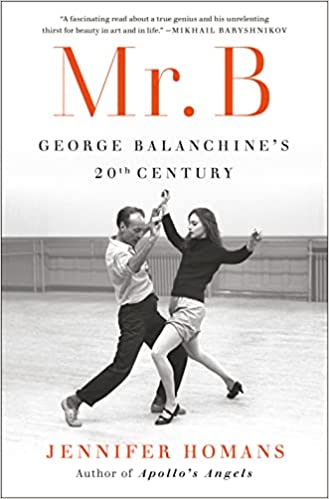 |
Mr. B: George Balanchine's 20th Century ISBN: 0812994302 OCLC: 1293665648 Random House 2022 Arguably the greatest choreographer who ever lived, George Balanchine was one of the cultural titans of the twentieth century—The New York Times called him “the Shakespeare of dancing.” His radical approach to choreography—and life—reinvented the art of ballet and made him a legend. Written with enormous style and artistry, and based on more than one hundred interviews and research in archives across Russia, Europe, and the Americas, Mr. B carries us through Balanchine’s tumultuous and high-pitched life story and into the making of his extraordinary dances.Balanchine’s life intersected with some of the biggest historical events of his century. Born in Russia under the last czar, Balanchine experienced the upheavals of World War I, the Russian Revolution, exile, World War II, and the Cold War. A co-founder of the New York City Ballet, he pressed ballet in America to the forefront of modernism and made it a popular art. None of this was easy, and we see his loneliness and failures, his five marriages—all to dancers—and many loves. We follow his bouts of ill health and spiritual crises, and learn of his profound musical skills and sensibility and his immense determination to make some of the most glorious, strange, and beautiful dances ever to grace the modern stage.With full access to Balanchine’s papers and many of his dancers, Jennifer Homans, the dance critic for The New Yorker and a former dancer herself, has spent more than a decade researching Balanchine’s life and times to write a vast history of the twentieth century through the lens of one of its greatest artists: the definitive biography of the man his dancers called Mr. B. |


